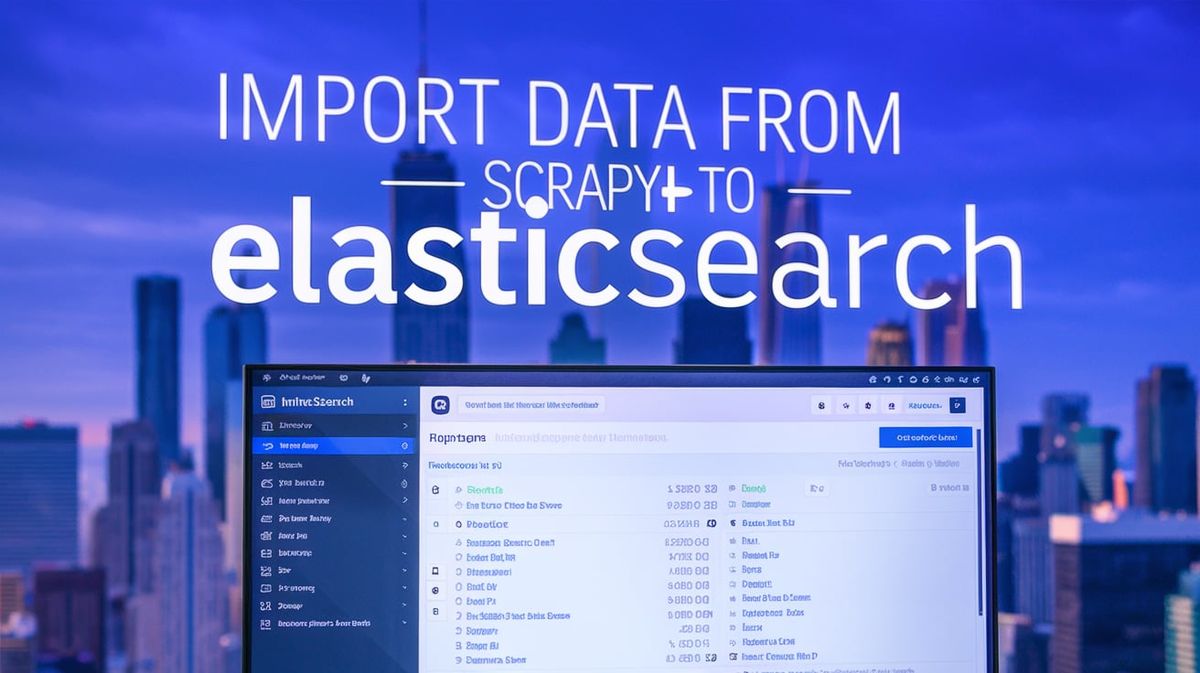To import data from Scrapy to Elasticsearch, you will need to install the elasticsearch library and use it to connect to your Elasticsearch cluster. Here's how you can do this:
- Install the
elasticsearchlibrary usingpip:
pip install elasticsearch
2. In your Scrapy spider, import the elasticsearch library and use it to connect to your Elasticsearch cluster:
from elasticsearch import Elasticsearch es = Elasticsearch(hosts=[{'host': 'localhost', 'port': 9200}])
3. Use the create() method of the Elasticsearch client to index the data in Elasticsearch:
def parse(self, response): # Parse the data from the response data = {...} # Index the data in Elasticsearch res = es.create(index='myindex', doc_type='mytype', body=data)
4. If you want to update an existing document in Elasticsearch, you can use the update() method instead of the create() method:
res = es.update(index='myindex', doc_type='mytype', id=data['id'], body=data)
Importing Data From Scrapy to Elasticsearch
Elasticsearch is a powerful search and analytics engine ideal for storing and analyzing large datasets. You can import Scrapy's scraped data into Elasticsearch for comprehensive search capabilities, insightful analytics, and effective visualization. Here's the procedure:
- Install Elasticsearch Library: Using pip, the Python package management system, install the Elasticsearch library. The command for this is:
pip install Elasticsearch.
Connecting to Elasticsearch Cluster: Once the Elasticsearch library is installed, you can proceed to connect to your Elasticsearch cluster from your Scrapy spider. Use the following python snippet:Copy Code
from elasticsearch import Elasticsearch
es = Elasticsearch(hosts=[{'host': 'localhost', 'port': 9200}])Indexing data in Elasticsearch: By using the Elasticsearch client's 'create()' method, you can index the data retrieved from your Scrapy spider:Copy Code
def parse(self, response):
# Parse the data from the response
data = {...}
# Index the data in Elasticsearch
res = es.create(index='myindex', doc_type='mytype', body=data)Updating Existing Documents in Elasticsearch: To update an existing data document in Elasticsearch, use the update() method as shown below:Copy Code
res = es.update(index='myindex', doc_type='mytype', id=data['id'], body=data)
Reasons to Use Scrapy with Elasticsearch
- Data insights: By importing Scrapy's indexed data into Elasticsearch, you harness the powerful search and analytics capabilities of Elasticsearch with your data.
- Creating a searchable database: Elasticsearch's expanded search capabilities help create a user-friendly searchable database.
- Visualization: Elasticsearch collaborates well with a host of visualization tools (like Kibana), allowing the creation of interactive data charts, graphs, and maps.
- Data sharing: Elasticsearch's RESTful API allows smooth sharing of data across platforms, benefiting developers and data analysts.
Why you need to import data from scrapy to elasticsearch?
There are several reasons why you might want to import data from Scrapy to Elasticsearch:
- To store and analyze large datasets: Elasticsearch is a powerful search and analytics engine that is well-suited to storing and analyzing large datasets. By importing data from Scrapy into Elasticsearch, you can take advantage of its powerful search and analytics capabilities to gain insights from your data.
- To create a searchable database: Elasticsearch offers full-text search and faceted search capabilities, which make it a great platform for creating a searchable database of your data. By importing data from Scrapy into Elasticsearch, you can create a searchable database that allows users to easily find and access specific pieces of information.
- To visualize your data: Elasticsearch integrates with a variety of visualization tools, such as Kibana, which allow you to create interactive charts, graphs, and maps of your data. By importing data from Scrapy into Elasticsearch, you can use these tools to visualize your data and gain insights from it.
- To share your data with others: Elasticsearch can be accessed via a RESTful API, which makes it easy to share your data with others. By importing data from Scrapy into Elasticsearch, you can make your data available to others who can use it to build applications or perform analysis.
Overall, importing data from Scrapy to Elasticsearch can be a powerful way to store, analyze, and share large datasets. It can also be a useful way to create a searchable database of your data, visualize it, and make it available to others via a RESTful API. If you are working with large datasets and want to take advantage of Elasticsearch's powerful search and analytics capabilities, importing data from Scrapy to Elasticsearch can be a great option.
FAQ About Importing From Scrapy to ElasticSearch
How do I install the Elasticsearch library in Scrapy?
To install the Elasticsearch library in Scrapy, you can use pip:
pip install elasticsearch
How do I connect to my Elasticsearch cluster in Scrapy?
To connect to your Elasticsearch cluster in Scrapy, you can use the Elasticsearch client from the elasticsearch library:
from elasticsearch import Elasticsearch es = Elasticsearch(hosts=[{'host': 'localhost', 'port': 9200}])
How do I index data in Elasticsearch from Scrapy?
To index data in Elasticsearch from Scrapy, you can use the create() method of the Elasticsearch client:
res = es.create(index='myindex', doc_type='mytype', body=data)
How do I update an existing document in Elasticsearch from Scrapy?
To update an existing document in Elasticsearch from Scrapy, you can use the update() method of the Elasticsearch client:
res = es.update(index='myindex', doc_type='mytype', id=data['id'], body=data)
Can I use Elasticsearch's RESTful API to access data indexed by Scrapy?
Yes, you can use Elasticsearch's RESTful API to access data that has been indexed by Scrapy. You can use the requests library or another HTTP client to send HTTP requests to Elasticsearch and retrieve data from your indices. For example, you can use the GET method to retrieve a specific document by its id:
import requests res = requests.get('http://localhost:9200/myindex/mytype/{}'.format(document_id)) document = res.json()
You can also use the POST method to perform searches on your indices and retrieve matching documents:
import requests data = { "query": { "match": { "field_name": "search term" } } } res = requests.post('http://localhost:9200/myindex/_search', json=data) results = res.json()
Overall, Elasticsearch's RESTful API provides a flexible and powerful way to access data indexed by Scrapy.



